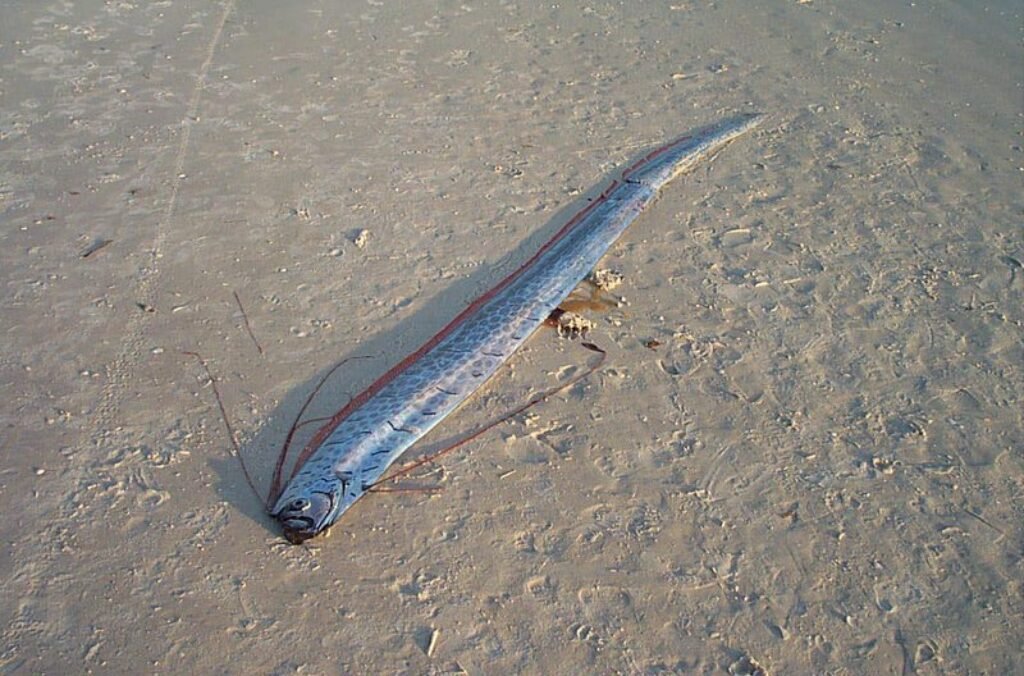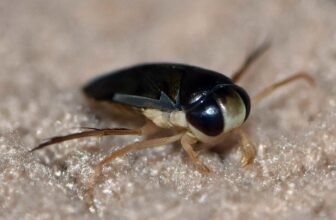
One of the mysteries of life in the ocean and evolution is deep-sea fish. Inhabiting one of the Earth’s most extreme environments, these fish have evolved remarkable adaptations to endure in the absence of light, at high pressure and with low availability of food.
Table of Contents
Here’s a table of deep-sea fish names, their habitats, and unique characteristics:
| Name | Habitat (Depth) | Unique Characteristics |
|---|---|---|
| Lanternfish | 300-1,000 meters | Emits light through photophores, vital in the food chain. |
| Anglerfish | 1,000-3,000 meters | Bioluminescent lure for attracting prey. |
| Viperfish | 200-4,000 meters | Long teeth and photophores for hunting in darkness. |
| Fangtooth | 200-5,000 meters | Large teeth, small body, adapted to extreme pressure. |
| Barreleye Fish | 600-800 meters | Transparent head with upward-facing, rotating eyes. |
| Blobfish | 600-1,200 meters | Gelatinous body, withstands high-pressure environments. |
| Giant Oarfish | Up to 1,000 meters | World’s longest bony fish, up to 11 meters. |
| Greenland Shark | 200-1,200 meters | Lives over 400 years, scavenges and preys on various fish. |
| Sixgill Shark | Up to 2,500 meters | Ancient species with lineage from the Jurassic period. |
| Cookiecutter Shark | 1,000-3,000 meters | Small but uses suction to “bite” chunks out of prey. |
Names of Several Common Deep-Sea Fish
Below are a few of the most bizarre and popular deep-sea fish:
1. Lanternfish (Family: Myctophidae)

- Description: There are over 240 species of lanternfish, yet they are one of the most common deep-sea fish. They also sport photophores (light-emitting organs) on their bodies, which help them communicate and blend in.
- Habitat: 300-1,000 meters depth
- Significance: It represents a large portion of the ocean’s biomass and plays an important role in the food web.
2. Anglerfish (Order Lophiiformes)

- Description: They’re known for their bioluminescent lure to attract prey. The males, on the other hand, are much smaller than female anglerfish, whom they also parasitize.
- Habitat: 1000–3000 meter depths.
- Turn: Their modified dorsal fin serves as an illuminating “fishing rod.”
3. Viperfish (Genus: Chauliodus)

- Description: Noted for long, needle-tipped teeth and photophores on their fins. They are ferocious predators.
- Habitat: Ranges from 200-4,000 meters.
- Diet: Smaller fish and squid.
4. Fangtooth (Anoplogaster cornuta)

- Description: Though small, fangtooth fish have teeth that are hugely oversized for their body size.
- Habitat: Depths of 200–5,000 meters.
- Adaptation: They are built to withstand extreme pressure.
5. Barreleye Fish (Macropinna microstoma)

- Reputation: very transparent heads; tubular eyes that look up and can rotate.
- Depth: 600–800 m.
- Specialized Feature: Their eyes are designed to perceive dim light and potential prey in the dark.
6. Blobfish (Psychrolutes marcidus)

- Description: This jellylike fish lives in extreme environments with high pressure and is frequently dubbed one of the “ugliest fish.”
- Habitat: Within depth range of 600–1,200 m.
What Do Deep Sea Fish Eat?
Because food is spscarcen the deep sea, deep-sea fish have varied diets and feeding tactics:
1. Marine Snow
- Organic particles, from decomposing plants, animals and fecal matter, fall from surface waters.
2. Carcasses
- They feed on large ananimals, whalesr other large marine life that sink to the ocean floor and decay.
3. Predation
- Most deep-sea fish are carnivorous and feed on smaller fish, squid, and crustaceans. For example:
- To catch its prey, anglerfish utilizes its bioluminescent lure.
- Viperfish and fangtooth use twirls of serrated teef to capture passing prey.
4. Scavenging
- Certain species will live off dead matter, including what is left of larger animals.
The Largest Deep-Sea Fish
1. Giant Oarfish (Regalecus glesne)

- Take: Grows up to 11 m (36 ft) long, which makes it the longest bony fish.
- Habitat: At depths of up to 1,000 meters.
- Eats: Small plankton, krill, and jellyfish.
- Did You Know: With their long, ribbon-like bodies, oarfish are considered by some to be the source of many sea serpent myths.
2. Greenland shark, (Somniosus microcephalus)

- Length: Up to 7 m (23 ft)
- abitat: Found in cold, deep waters, on average at depths of 200–1,200 m.
- Diet: Feeds by scavenging on dead marine animals, but also prey on fish and squid.
- Did you know: They can live around 400 years, making them one of the longest living vertebrates ever.
3. Sixgill Shark (Hexanchus griseus)

- Size: Typically up to 5m (16ft) long.
- Habitat At depths of up to 2,500 meters.
- Diet: Fish, rays, and crustaceans.
- Channels: They are an ancient species with a lineage dating back to the Jurassic period.
Deep-Sea Fish: Their Place in the Ecosystem
Deep-sea fish represent an important part of the ocean’s ecological balance:
1. Nutrient Recycling
- They recycle nutrients in the deep sea by feeding on organic matter and marine snow.
2. Carbon Storage
- These micro-organisms play a key role in the carbon cycle, regulating levels of CO₂ in the atmosphere by transferring carbon to deep oceans.
3. Food Chain Link
- Much of the diet of deep-sea fish consists of prey for larger predators, linking the deep ocean to the shallow ecosystems.
Q1: What is the difference between deep sea fish and other fish?
There is a unique adaptation among deep-sea fish for life in the extreme and sunless universe of the deep. They include specialized features like bioluminescence, large eyes and bodies that can endure crushing pressure none of which shallow-water varieties have.
Q2: Why do some types of fish that live in the deep sea produce their own light?
Bioluminescence helps deep-sea fish lure prey, signal to one another and escape predators in the depths’ the insistent pitch-black water. The illumination is derived from chemical reactions or from symbiotic bacteria.




